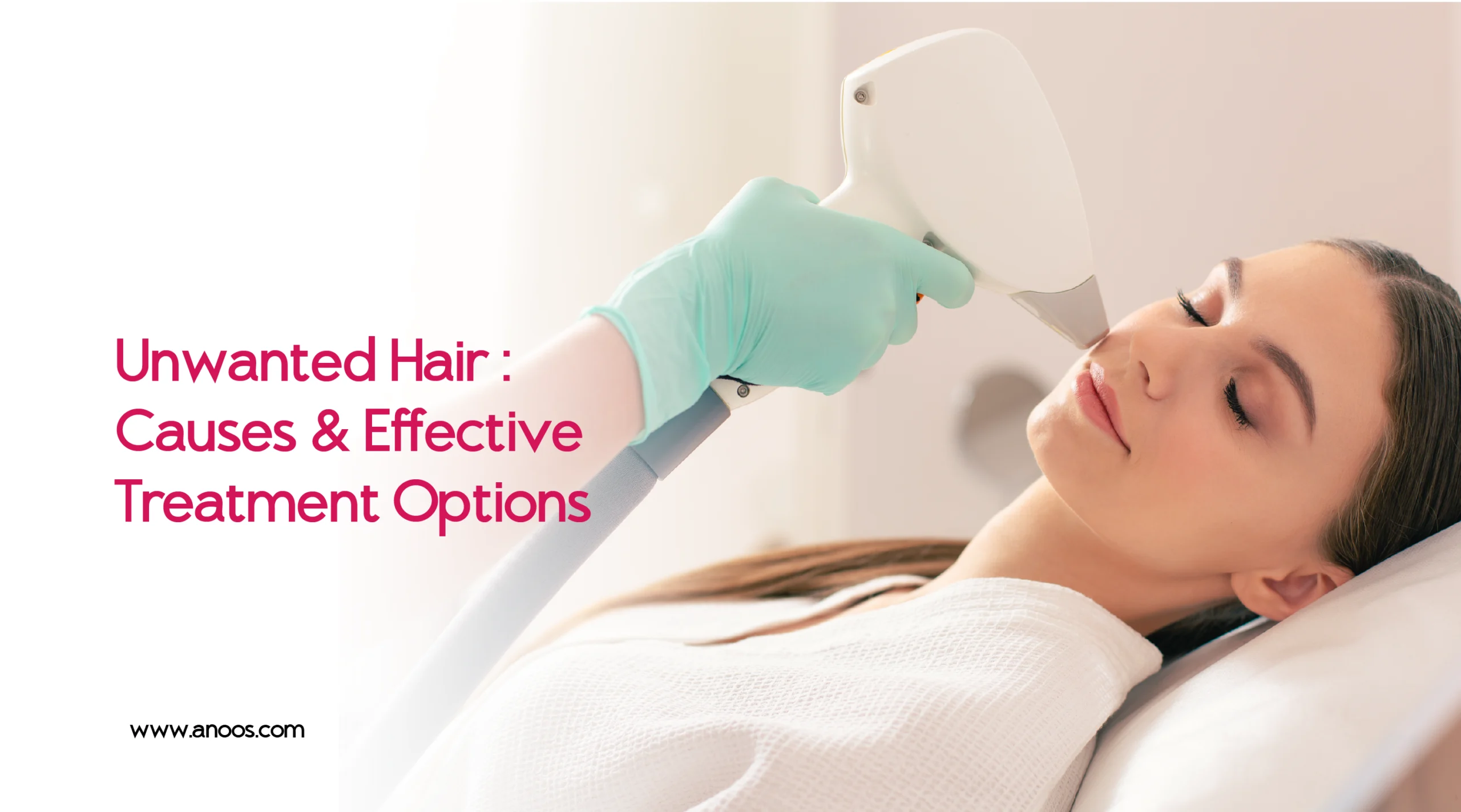
Unwanted Hair: Causes & Effective Treatment Options
Many people commonly think of unwanted hair, affecting men and women. Unwanted hair causes depressions and low confidence in many. Overgrowth of hair on the face, arms, legs, or other body parts can be quite disturbing and create discomfort. Luckily, besides monitoring this problem, modern technologies in the field of hair removal made it much easier to control and permanently reduce unwanted hair growth.
This blog will discuss the major factors like unwanted hair causes and treatments available today ranging from temporary solutions to those long-term hair reduction methods.
What Causes Unwanted Hair Growth?
To finding the right treatment, first we should understand the root causes. Below are some of the major causes of excessive hair growth:
1. Hormonal Imbalance
Hormonal changes, especially increased levels of androgens (male hormones), can cause excessive hair growth. This is common in puberty, pregnancy, or conditions like Polycystic Ovary Syndrome (PCOS).
2. Genetics
Sometimes, unwanted hair is simply hereditary. If your parents or close relatives have excess body or facial hair, there’s a higher chance you may experience it too.
3. Medications
Certain medications, such as steroids, hormonal therapy, and even birth control pills, can cause abnormal hair growth patterns.
4. Medical Conditions
Hirsutism, or excessive hair growth in women, can be caused by health issues such as Cushing’s Syndrome, pcos, pcod, thyroid disorders, or tumors affecting hormone production.
5. Stress and Lifestyle
A poor diet, lack of sleep, or high stress levels can disturb the hormonal balance and indirectly cause excessive hair growth.
Effective Treatment Options for Unwanted Hair
Now that we have the causes, let’s talk about the best solutions. Depending on your needs – whether you are looking for temporary hair removal or a more permanent reduction – there is something for everyone.
1. Shaving
Quick, easy, and painless — but only offers temporary results and can sometimes lead to ingrown hairs or razor bumps if the technique is poor.
2. Waxing
removes hair from the root and thus lasts longer than shaving, but hair regrown around 3–4 weeks; however, it can be painful and cause skin irritation and redness.
3. Hair Removal Creams
Depilatory creams break down the hair at the skin’s surface. These are painless methods of hair removal but may contain harsh chemicals that irritate a sensitive skin type.
4. Threading and Plucking
Ideal for smaller areas like eyebrows or upper lips, these methods are cheap but take a lot of time and sometimes cause redness.
5. Laser Hair Removal
A long-lasting, popular solution for hair removal, laser treatment uses light energy to target and destroy hair follicles. It is safe, effective, and works well on most skin types when performed by a professional using an FDA-licensed laser.
6. Electrolysis/ Ibprobe
This is the only FDA Approved permanent hair removal technique. It uses electric currents to destroy the hair follicle but often requires several sessions and is slightly uncomfortable.
7. Prescription Treatments
For hair growth due to hormonal imbalance or PCOS, doctors prescribe birth control pills, anti-androgens, and topical agents like eflornithine.
Why Choose Professional Hair Removal?
DIY is quite handy but often results in skin challenges. Professional hair removal treatments — like laser hair reduction or electrolysis — provide safer, more effective, and long-lasting solutions.
Frequently Asked Questions (FAQs)
Q1: What is the most permanent solution for unwanted hair?
IbPro™ Treatment is a permanent hair removal procedure that has been approved by the FDA. However, laser hair removal provides permanent hair reduction, which makes any regrowth lighter and sparser.
Q2: Is laser hair removal safe for all skin types?
Yes, especially with the newer technologies such as the Diode lasers and ND:YAG lasers, which have made treatments safe and effective for both light and dark skin tones.
Q3: How many sessions are needed for laser hair removal?
Most clients require 6–8 sessions to achieve approximately 70–90% hair reduction. These may be followed by maintenance sessions once or twice a year.
Q4: Can unwanted hair growth be a sign of a health issue?
Yes, conditions such as PCOS, thyroid imbalances, or Cushing’s Syndrome can cause abnormal hair growth. A sudden or excessive increase in hair growth warrants a consultation with a physician.
Q5: Do over-the-counter creams remove hair permanently?
No. Hair removal creams give only temporary results because they dissolve the hair at the level of the skin.

